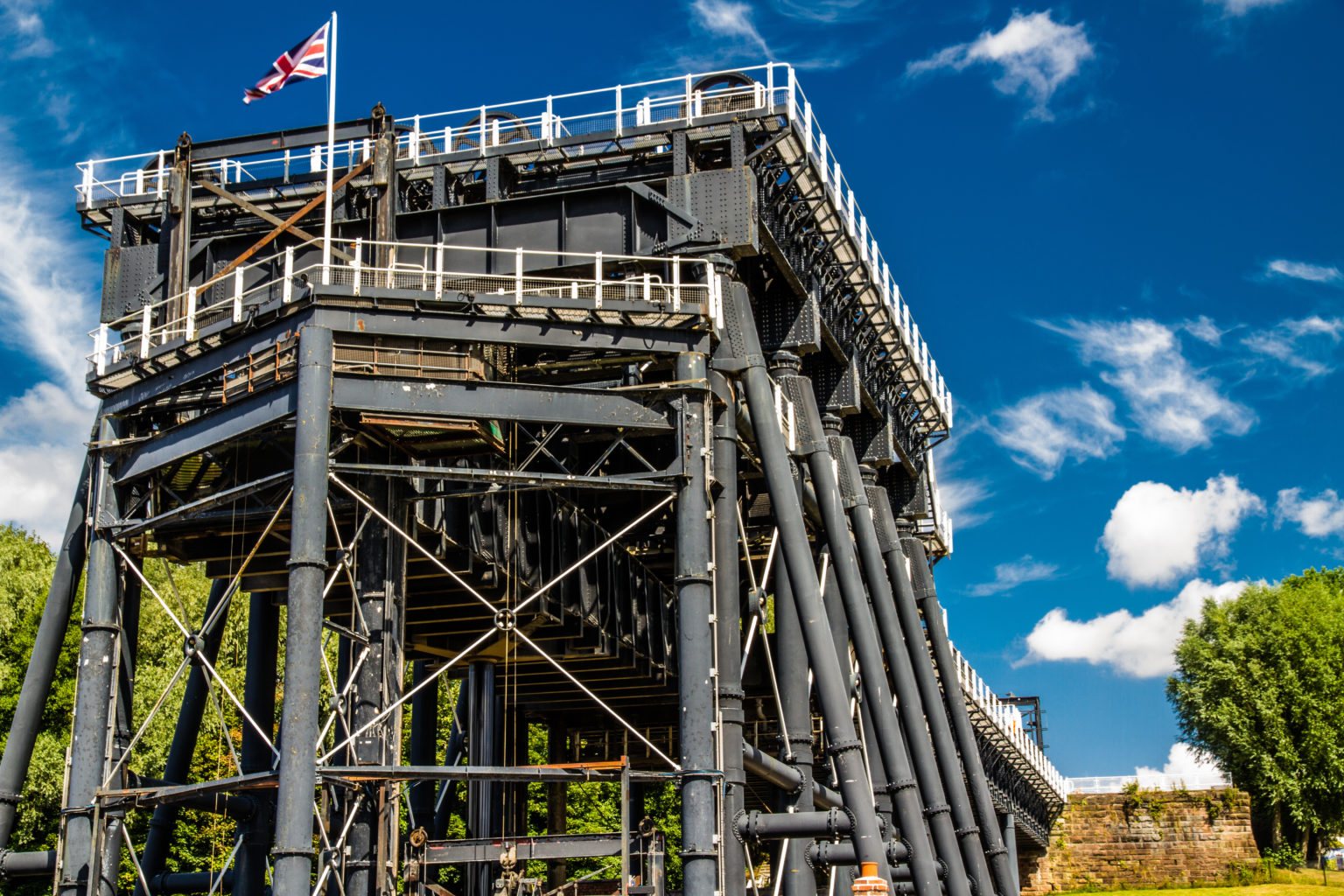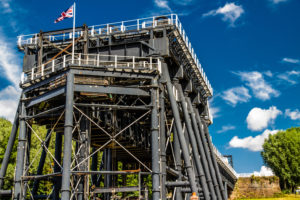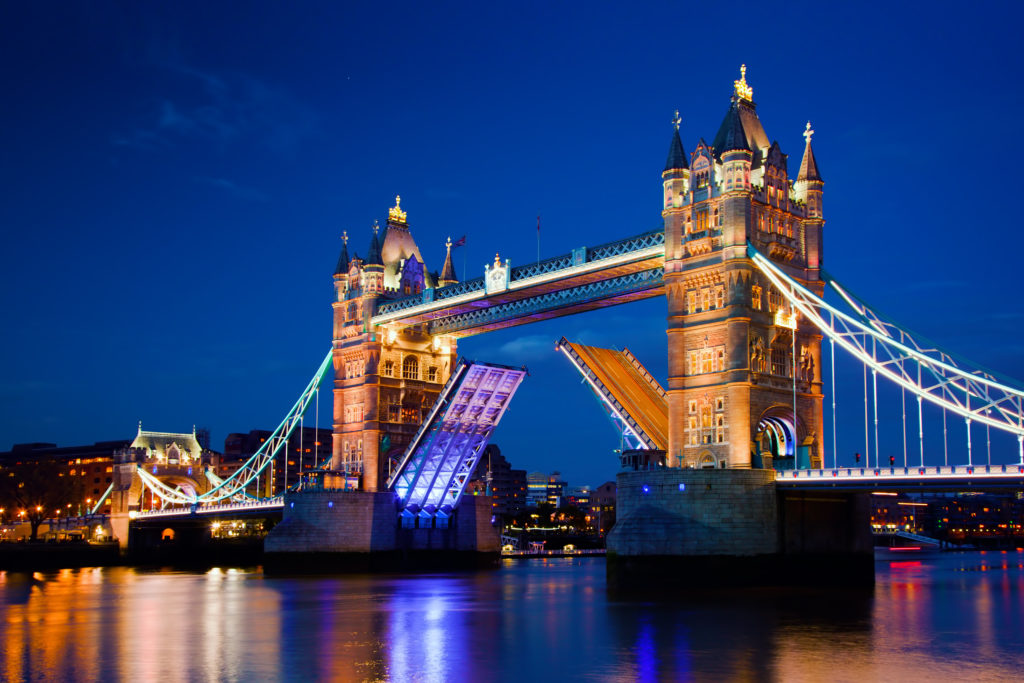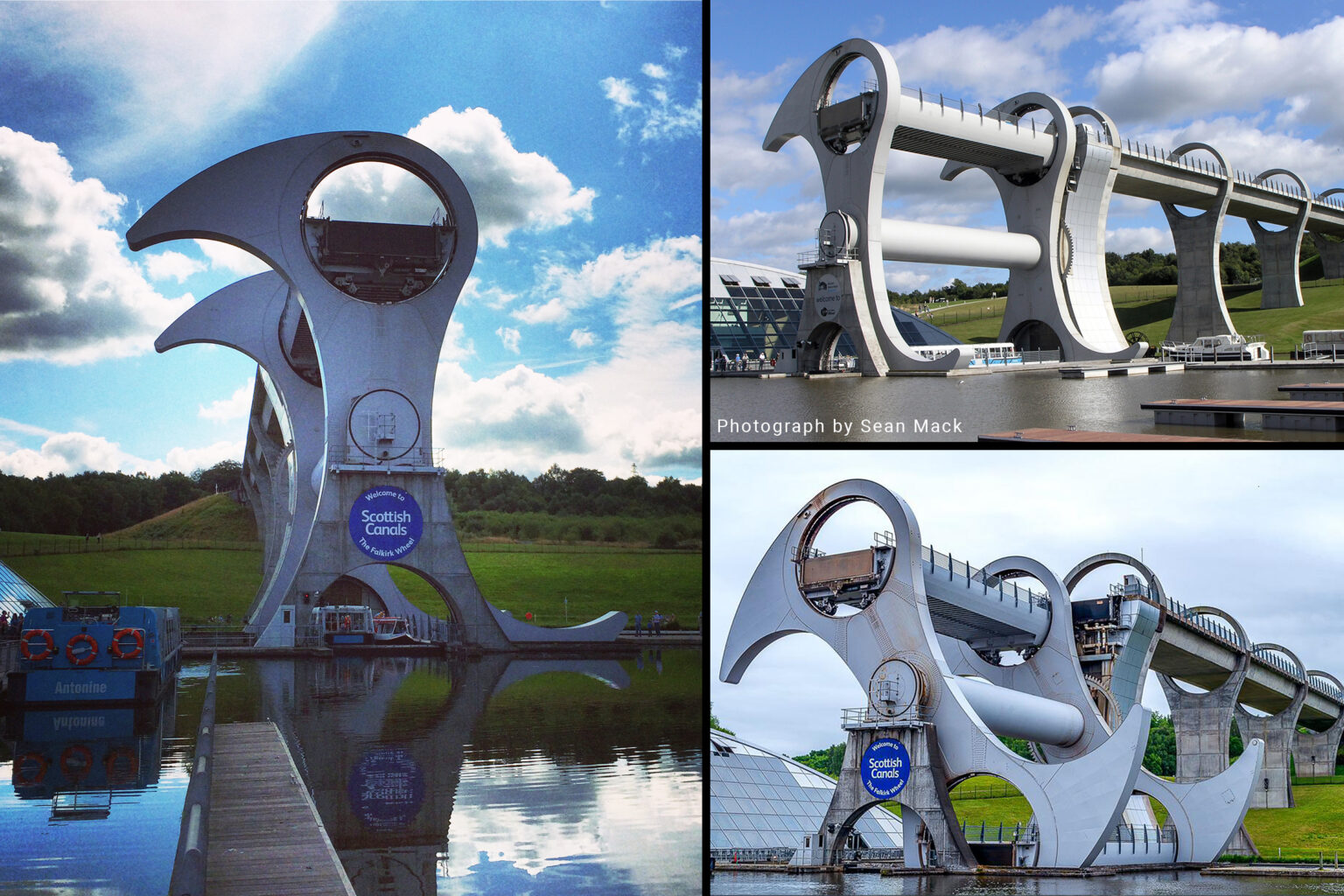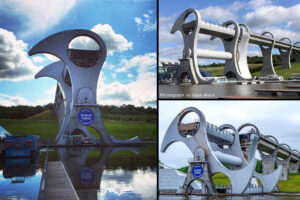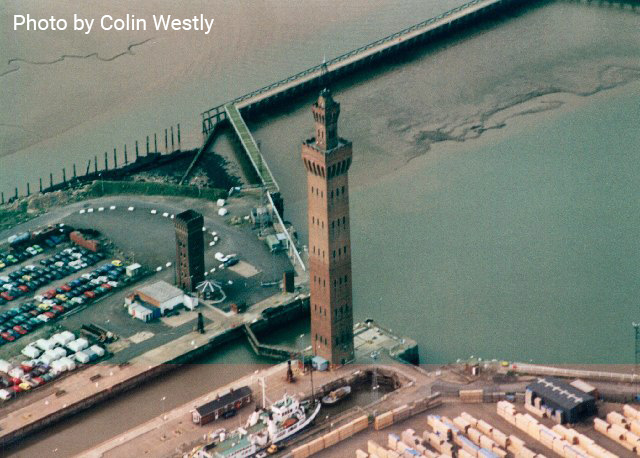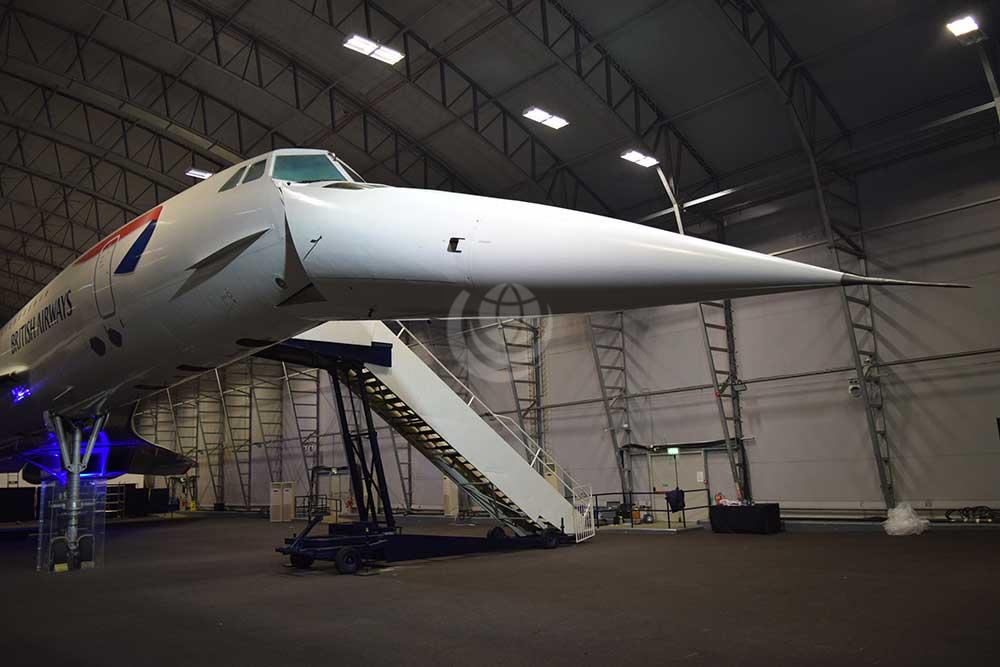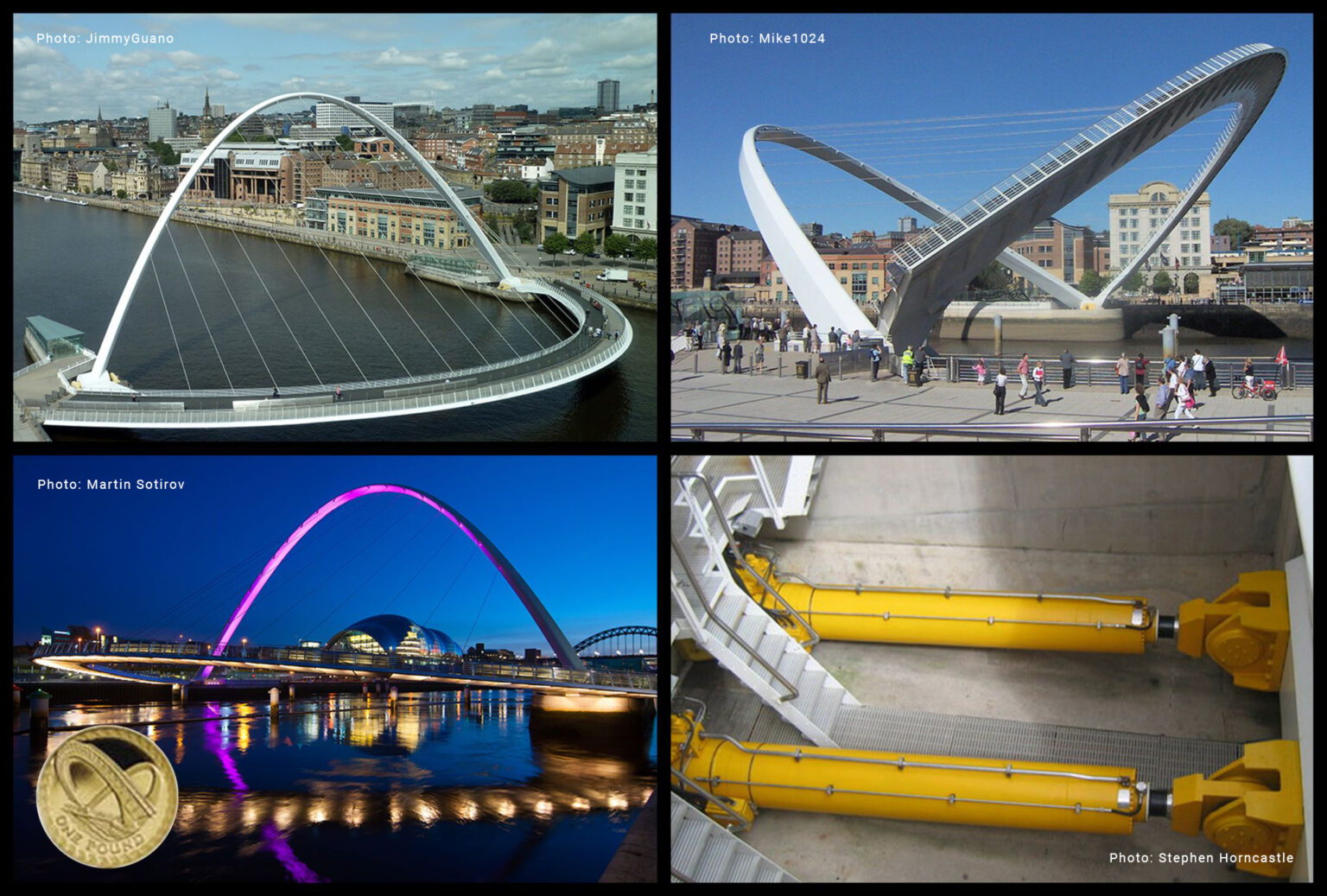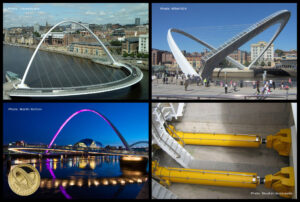Now for the second of the two boat lifts in the UK.
This ingenious example of 21st century engineering is the Falkirk Wheel in Scotland; the only rotating boat lift on the planet. That qualifies it to be recognised amongst the world’s top hydraulic landmarks, surely?
The design has two equally sized gondolas on opposite sides of the wheel. These gondolas are always exactly the same weight as each other regardless of whether they’re carrying boats due to Archimedes’ Principle (floating objects displace their mass in water).
This means that the ten hydraulic motors powering the rotation don’t have to work very hard to lift the 600 tonne gondolas. Only around 1.5 kWh of energy is used per lift – that’s about the same as boiling eight kitchen kettles!
You can learn more about hydraulic motors here.



